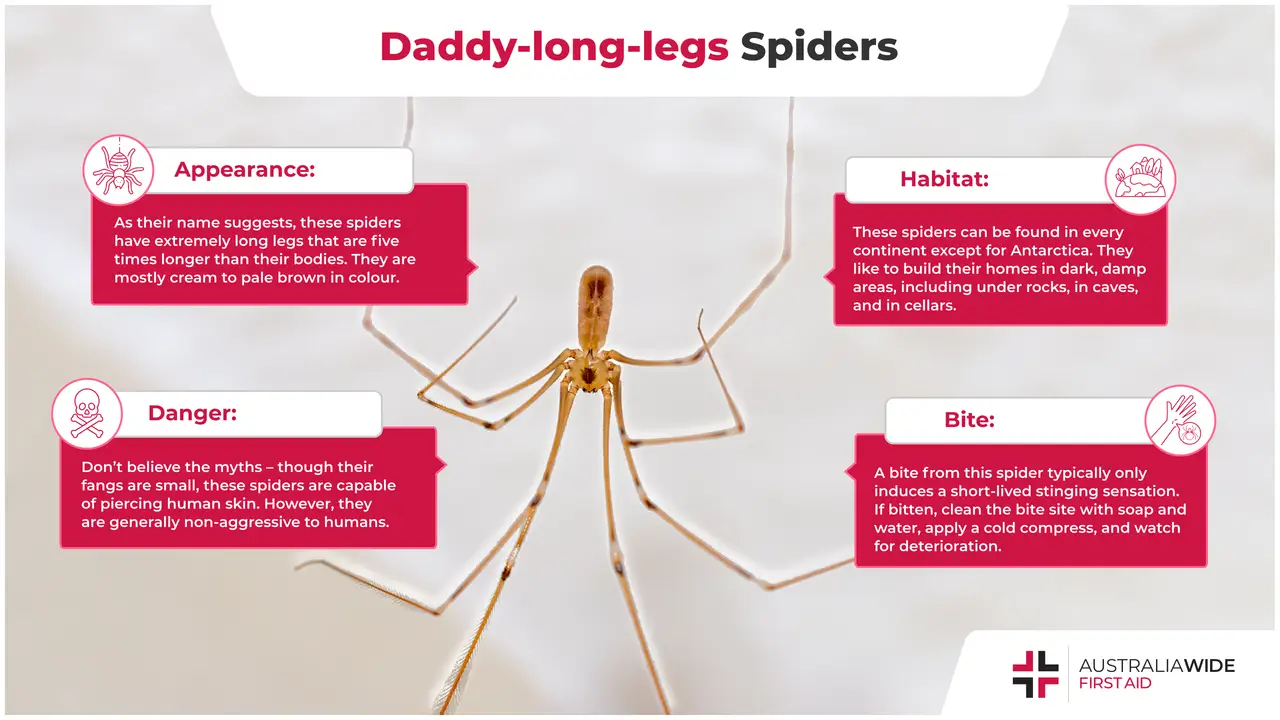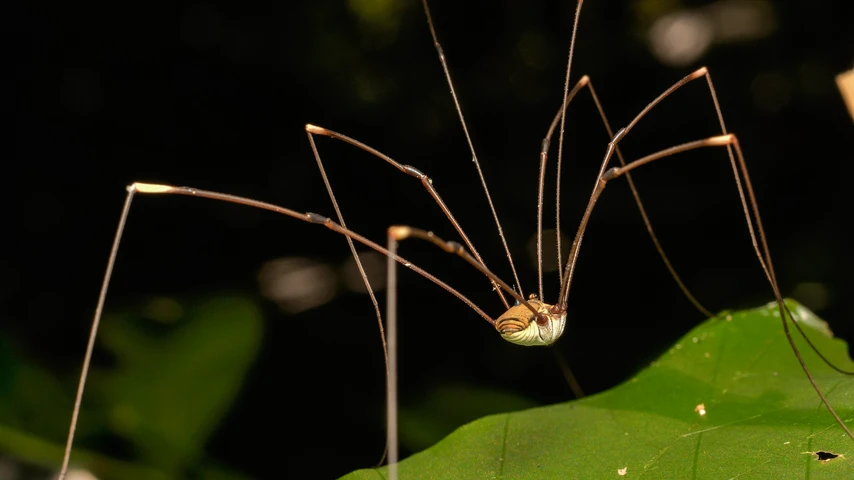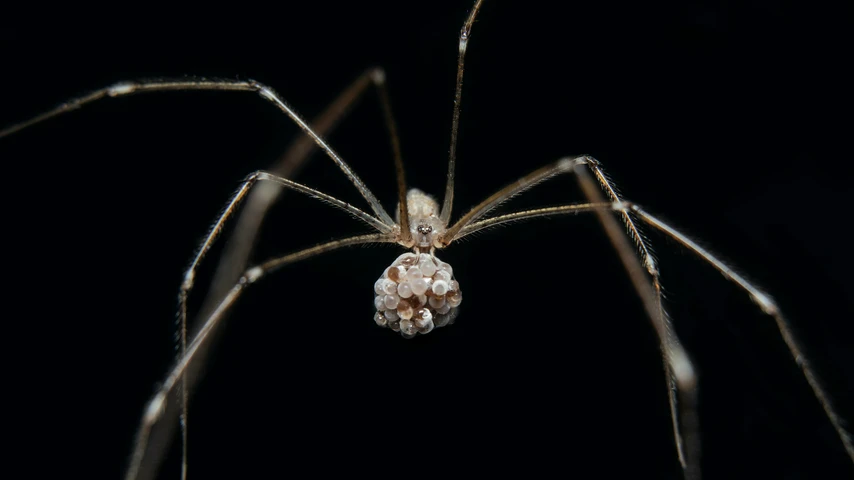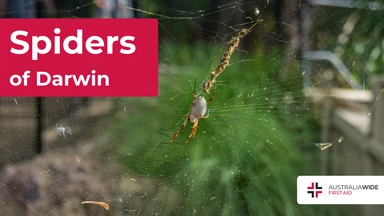Spider Facts: The Daddy-Long-Legs Spider


Daddy-Long-Legs spiders are a quiet bunch.
They are passive around humans and like to hide away in dark corners. Despite their relatively harmless appearance, Daddy-Long-Legs spiders are well known for attacking species of spiders that are dangerous to humans. As much, they are an excellent housemate – they leave us be while stopping other, more undesirable spiders from seeking shelter in our homes.
Today, we will be covering all things Daddy-Long-Legs, including what they are, where they are from, what they eat, and (most importantly) what to do if you are ever bitten by one. Let’s get into it!
Daddy-Long-Legs spiders belong to the family of spiders called Pholcidae. This family of spiders consists of more than 1,800 species. As well as the Daddy-Long-Legs spider, other common Pholcidae spiders include the vibrating spider and the skull spider.
It takes a year for a young Daddy-Long-Legs spider to reach adulthood, and once they reach adulthood, they can live for another two years. Daddy-Long-Legs spiders love to dangle upside-down and wait for unwitting prey in their messy and irregular-shaped webs.
Although they have non-sticky webs and a relatively small body, Daddy-Long-Legs spiders are formidable predators and can kill their more more venomous counterparts.
Daddy-Long-Legs spiders got their name from their extremely long legs, which are five times longer than their bodies. In terms of size, the female’s body is generally 8mm in length, while the body of their male counterpart is a smaller 6mm.
They have two body parts, the cephalothorax and the abdomen. Daddy-Long-Legs spiders have eight legs that are attached to the cephalothorax. They also have eight eyes that are clumped together at the front of their bodies.
Most Daddy-Long-Legs spiders have cream to pale brown abdomens that are lightly patterned. In saying that, there are some species, such as the Marbled Cellar spider, that have a strikingly patterned abdomen with a dark strip on the underside.

Daddy-Long-Legs spiders primarily eat insects, spiders, and other small invertebrates. They are renowned for killing and consuming other, more dangerous spiders like the Redback spider and the Funnel-web spider.
But how do they do this?
Well, their long legs provide a key advantage. Daddy-Long-Legs spiders use their long legs to haul their more venomous, albeit short-legged counterparts into their web. They then use their long legs to wrap their prey up before the latter has a chance to attack. And once the prey is immobilised, it is bitten and killed.
Daddy-Long-Legs spiders are originally from Europe. However, alongside humans, they travelled the word far and wide and can now be found in every continent across the globe, except for Antarctica. They enjoy warm places and are the most common species of spider in Australia.
In the wilderness, Daddy-Long-Legs spiders like to build their homes in dark, damp areas – for instance, under rocks, in caves, and in abandoned burrows.
In urban areas, Daddy-Long-Legs spiders live alongside humans in quiet, undisturbed areas of the home – for instance, in corners, attics, and cellars. This is why Daddy-Long-Legs spiders are also called “Cellar spiders”.
It has long been believed that the Daddy-Long-Legs spider has the most poisonous spider venom known to man. However, there is no available evidence to substantiate this claim. This myth was simply born out of the observation that Daddy-Long-Legs spiders could trap, kill, and eat Redback spiders.
In reality, the venom of a Daddy-Long-Legs spider is not that potent, even for insects. Another myth surrounding the Daddy-Long-Legs spider is that their fangs are too small (0.25mm) to pierce human skin. However, this is also false.
Daddy-Long-Legs spiders are capable of piercing human skin, and the bite can induce a short-lived burning or stinging sensation. Many reputable sources state that the bite of a Daddy-Long-Legs spider is not harmful to humans.
We run certified First Aid courses throughout all major Australia citys. Find a location near you.
If you are bitten by a Daddy-Long-Legs spider, consult the following steps:
Check out our Resource Library for information on how to identify and treat bites from ten of Australia's most venomous spiders.
Some people can have a severe allergic reaction when bitten by a spider. This is called anaphylaxis, a condition that can be fatal in as little as 15 minutes. Symptoms include:
If the casualty begins exhibiting any of the above symptoms, call Triple Zero (000) for an ambulance, consult the Australian Resuscitation Council's anaphylaxis treatment guideline, and follow DRSABCD and prepare to perform CPR.

If you would like to learn more about providing first aid in the event of a bite or sting, book a First Aid course with us today.
We also have articles on what to do if you get stung or bitten by snakes, fire ants, and marine life.
And for more details on how to identify and treat bites from some of Australia's deadliest spiders, including White tail spiders, Wolf spiders, Huntsman spiders, and Redback spiders, head to our Resource Library.
Disclaimer: This article is for informational purposes only. It does not constitute, replace, or qualify as any form of first aid training.

March 11, 2025
Darwin, the tropical capital of Australia’s Northern Territory, is home to a rich diversity of wildlife - including an impressive array of spiders. From the sprawling webs of golden orb-weavers to the cryptic camouflage of trapdoor spiders, these arachnids play a vital role in the local ecosystem. While some may inspire fear, the majority are harmless and even beneficial, helping to control insect populations.

September 4, 2024
Cat bites, while often underestimated, can lead to serious health complications if not treated promptly and properly. Cats' mouths harbour a variety of bacteria that can cause infections in humans.

April 1, 2024
Encounters with wildlife can often be thrilling, but when it comes to the creature known as the drop bear, the experience can quickly turn dangerous. A sharp increase in recent attacks prompts the need for understanding proper first aid procedures in case of an attack.